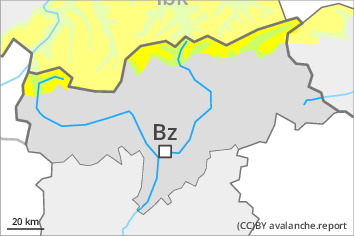
Danger level
 | 2200m |
|  |
|  | ||||
|  |
|  |

Wind slabs are to be evaluated with care and prudence. Weakly bonded old snow above approximately 2200 m.
The fresh and older wind slabs are to be evaluated with care and prudence in particular on steep shady slopes above approximately 2200 m. In the regions with a lot of snow the wind slabs are larger.
Weak layers in the old snowpack can still be released in very isolated cases by individual winter sport participants. The avalanche prone locations are to be found in particular on steep west, north and east facing slopes above approximately 2200 m and at transitions from a shallow to a deep snowpack.
Snowpack
dp.6: cold, loose snow and wind
dp.1: deep persistent weak layer
As a consequence of new snow and a moderate to strong wind from variable directions, wind slabs formed in the last few days in all aspects. In some cases the various wind slabs have bonded still only poorly with each other and the old snowpack, in particular on shady slopes.
Isolated avalanche prone weak layers exist in the centre of the snowpack in particular on very steep west, north and east facing slopes, especially between approximately 2200 and 2600 m.
Tendency
In some cases the various wind slabs have bonded still only poorly with the old snowpack, in particular on steep shady slopes at elevated altitudes.



